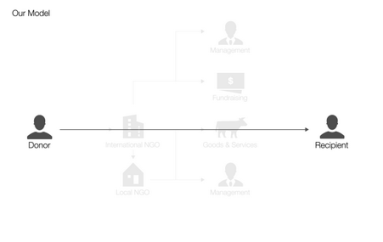 New Orleans I read a column in the New York Times by the spectacularly unreliable source, Nicholas Kristoff, that was flatly arguing in his classic neo-liberal mindless hucksterism that rather than try to change the world, perhaps it was better to simply make money and give more away. Despite the absurdity of his argument on its face, which should probably just begin and end with the point that in the vastness of wealth inequality today, the chances that any but the rarest would dedicate their lives to making “the sacrifice” to achieve wealth solely in order to give it away, or that simply giving money away eliminates the need to understand that the struggle against injustice, the drive to build power to create change, and the role of politics, culture, community, and other issues are not simply solved anonymously sending off a blank check, I figured “what the heck,” let’s look at one of these things called GiveDirectly and see what’s up.
New Orleans I read a column in the New York Times by the spectacularly unreliable source, Nicholas Kristoff, that was flatly arguing in his classic neo-liberal mindless hucksterism that rather than try to change the world, perhaps it was better to simply make money and give more away. Despite the absurdity of his argument on its face, which should probably just begin and end with the point that in the vastness of wealth inequality today, the chances that any but the rarest would dedicate their lives to making “the sacrifice” to achieve wealth solely in order to give it away, or that simply giving money away eliminates the need to understand that the struggle against injustice, the drive to build power to create change, and the role of politics, culture, community, and other issues are not simply solved anonymously sending off a blank check, I figured “what the heck,” let’s look at one of these things called GiveDirectly and see what’s up.
GiveDirectly appealed because it seemed simple. From the description Kristoff gave it seemed like a direct transfer of money from donors to recipients. You know, the way welfare was supposed to work although it never really worked exactly that way in the good old days before President Clinton and the gang changed “welfare as we know it.”
Going to the website though was bizarre. Yes, it was about a direct transfer of money to poor people in Kenya largely and perhaps Uganda. Otherwise it was mainly tech-speak. The organizers thought it was important to let you know that some academics had studied the issue and there were positive outcomes for families in receiving money, but any welfare recipient in the USA could have told any of these donors for decades that their big problems in life were too much month and not enough money. In fact, our whole argument in the National Welfare Rights Organization was “more money now” and “adequate income now.” GiveDirectly people also thought it was important for you to know that they sliced very little out of the pie in identifying who was poor through the marvel of determining that if you had a thatched hut in Kenya, therefore you were poor, and that they were bears on the issue of corruption.
It became clear in reading one section of the website after another that GiveDirectly was in fact the anti-charity. Their best arguments and their central emphasis was the fact that they wanted to change international philanthropy and make it less about projects and more about metrics. Though it was unclear what they were measuring other than the efficiency in which they were transmitting the money. There was something missing in the website and the whole concept. It was Save the Children without pictures of children. There were no people anywhere. There were graphs. There were charts. There were no people, and though there were plenty of metrics about the donations, there were none that offered any clue about the outcomes for the people.
The whole operation seemed deaf to anything but their own complaints as givers about giving. They made the outstanding point that modern technology had reduced the cost and mechanism for money transfers to pennies, but it never would have occurred to them to support something like ACORN’s campaign for Remittance Justice which would redirect literally billions now being predatorily siphoned off by banks and money transfer organizations and allowing workers and relatives to move money to their families throughout the world.
From their numbers they seem to have been in business for about five years and by organizing with this negative, “disrupt philanthropy” outreach they had zoomed up to $17 million in contributions with their “don’t get dirty, just give money” approach. Perhaps on their $1000 per year strategy they will argue in the future that in one year they made it easier for 15,000 families or so. Of course change the cost of remittances and you can redirect $30 billion that families are already trying to give each other, but simply being robbed on the way, and on their math that would benefit 30 million or so. Families will continue to give to families. It is unclear from their argument whether the rich techie crowd that seems enamored of this approach will keep giving for the rest of their lives for even these families.
What’s the point of all of this? Why bother? Why don’t they simply walk out in the street and toss up hundred dollar bills? Probably too much contact with real people and real problems.
The problem of poverty can be solved with money, but not just with money. Put that on a website. Discuss in Silicon Valley and Wall Street.